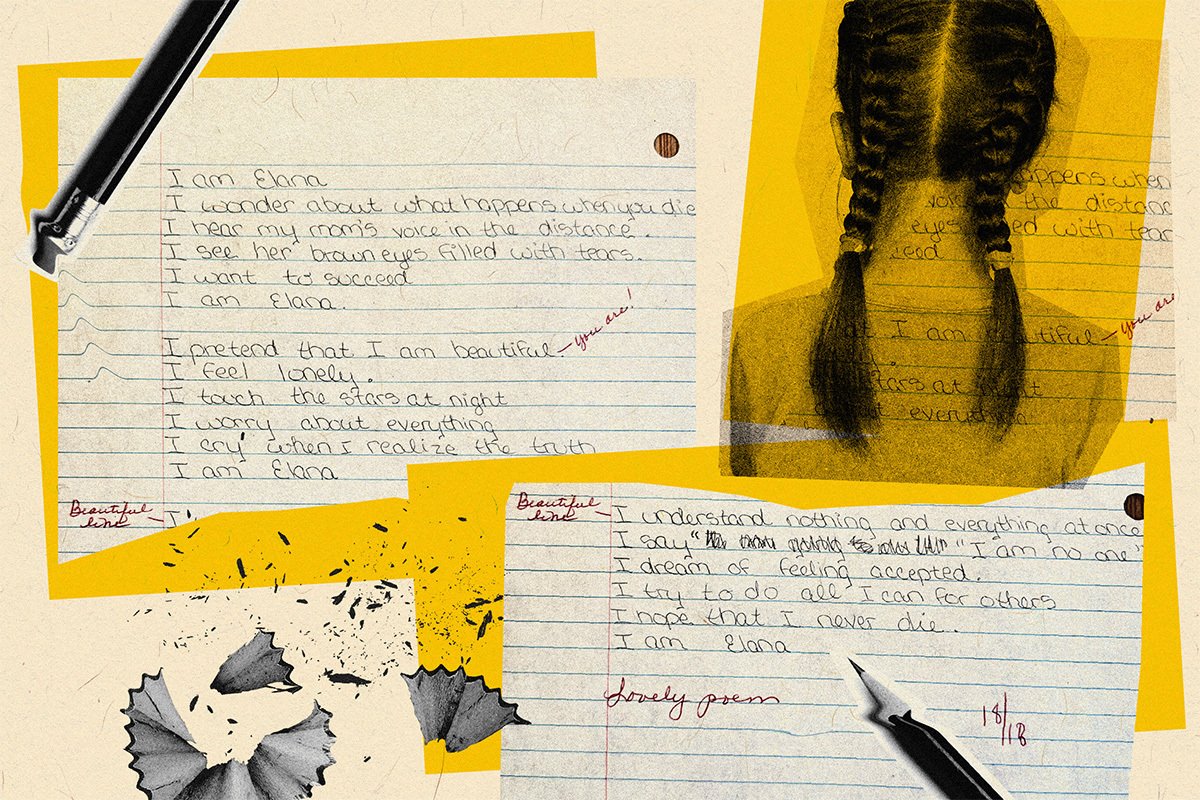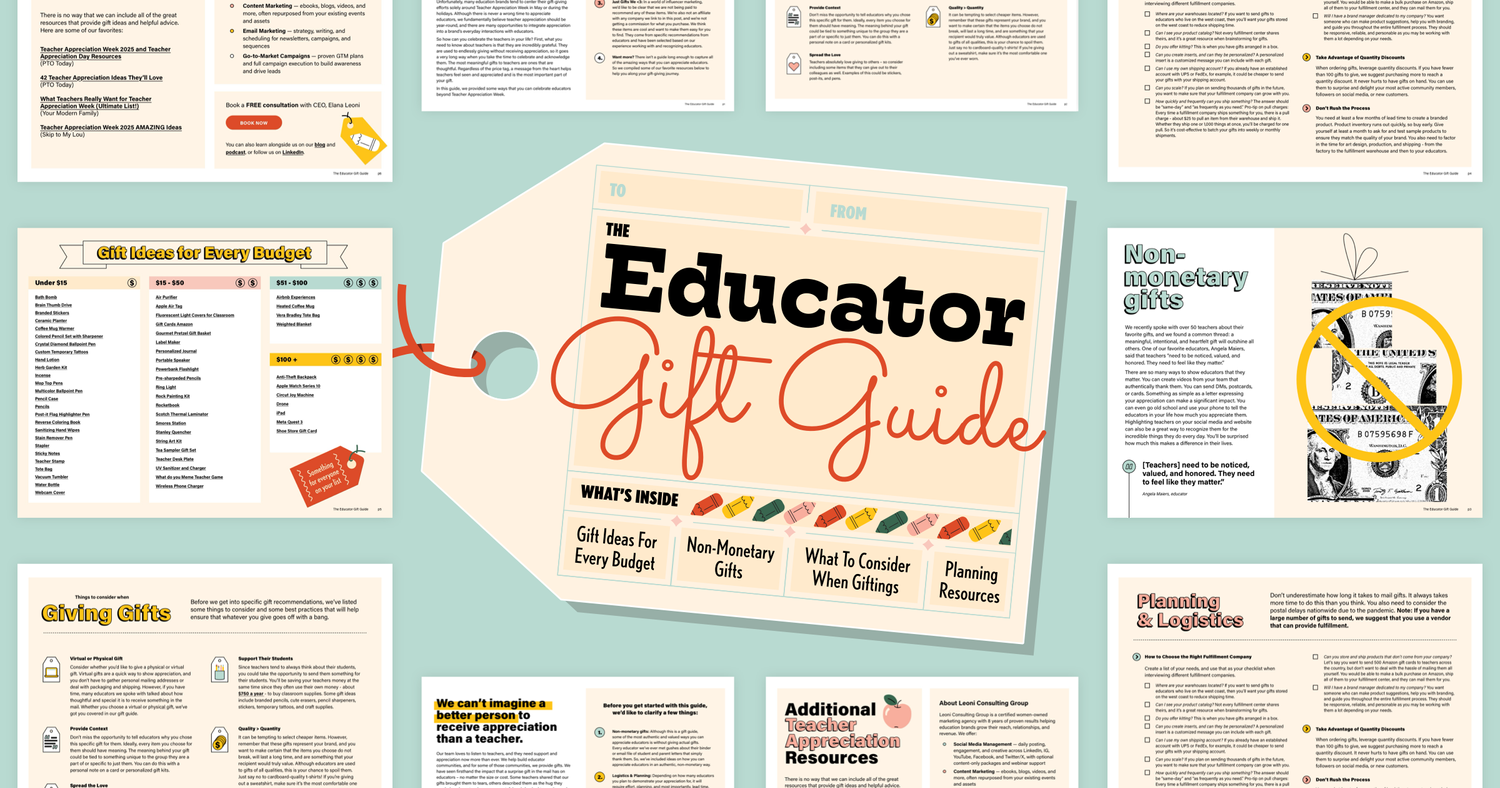Volume 43
This month’s letter is a little different. No trends. No industry updates. Just something that’s at the center of everything we do: teachers.
For a long time, I thought my story came down to one teacher, Mr. Follett, my fourth-grade teacher who changed my life. But recently, I found a box of old schoolwork and flipped through years of essays, report cards, and assignments. What struck me most was just how many teachers left their mark. One wrote “You are beautiful” in the margin of a poem where I expressed that I wished I were. Another patiently reminded me that “a lot” wasn’t one word and encouraged my ongoing use of the Oxford comma.
At the time, these may have seemed like little things. But seeing them all together, page after page, hit me. It was never just one teacher. It was ALL of them. Every bit of feedback and every note of encouragement was a small thread in something much bigger. They weren’t just teaching me academics. They were shaping how I saw myself and who I believed I could become.
That’s the power of teaching. It is everyday work, often quiet and unseen. But it changes the trajectory of lives in ways we’ll never fully be able to measure. And it deserves to be seen.
This is why we created the LCG Foundation. It's our way of shining a light on the moments that too often go unnoticed. Whether through microgrants or small gestures, we want to remind teachers that the work they do every single day matters.
As we head into Teacher Appreciation Week, I hope this is your reminder to go all out. Celebrate the teachers in your life loudly, proudly, and often. And when the week winds down, keep showing up for them all year long. If you’re looking for ideas, our newly updated Teacher Appreciation Gift Guide is packed with meaningful ways to say thank you.
To every teacher reading this, thank you. Thank you for showing up. Thank you for believing in your students, even when they don’t yet believe in themselves. And thank you for pushing through the hard days. You may not always get to see the impact of your work, but I promise you, it’s there.
With deep grattitude,
Elana
On Instagram? Educators are.
If you’re not on Instagram, you’re missing key opportunities to connect with educators. Our new Instagram Starter Pack helps EdTech brands and education organizations build a polished, engaging presence with ready-to-use posts and templates, and more.
Teacher Appreciation Gift Guide
From personalized stationery to self-care treats, this newly updated Teacher Appreciation gift guide rounds up meaningful gift ideas that show appreciation without adding clutter (hint: not mugs).
Just launched
Q2 in Education Marketing: What’s Coming, What’s Changing, and What You Need to Do Now (podcast)
How to Build Smarter EdTech Marketing Plans in a Changing Landscape (podcast)
[Popular] Key Social Media Insights from 2025 Reports: Trends & Strategies for EdTech (blog)
[Timely] EdTech Conference Planning: Social Media Checklist (download)
EdTech Good News
ISTE+ASCD, with a $1 million grant from Pinterest, just launched a digital wellbeing pilot to help students build healthier online habits.
Educators, school leaders, and mental health experts will collaborate in select districts to test strategies and find practical ways to support students' digital lives.
Marketing & Education Must Reads
Marketing
People stay loyal when they feel like they belong. Instead of pushing sales, share insights and experiences that make your audience feel like part of your world.
Custom GPTs perform way better when you build clear, detailed prompts that teach the AI exactly what you want.
Waiting until you have the "perfect" offer slows your growth. Amy Porterfield shares why starting your list early gives you a head start on building trust and momentum.
The Facebook algorithm favors posts that spark real conversations, so comments, shares, and thoughtful engagement matter way more than just likes.
Changing too much at once can muddy your results. This podcast episode breaks down how small, focused tests can uncover what actually drives more conversions.
Creating space for customer co-creation builds trust and drives innovation for stronger brand loyalty.
Ali Abdaal shares how grabbing attention in the first 5 seconds can make or break whether people stick around for your content.
Posting regularly, even if your videos aren’t perfect, helps the algorithm learn your content and connect you with the right audience.
Education
The OECD's latest report finds that empowering teachers with autonomy and support is key to unlocking high-quality instruction.
Edutopia shares how educators can create thoughtful policies that encourage responsible AI use while keeping student learning at the center.
Empathy, collaboration, and communication, not just tech skills, are becoming the true essentials for thriving alongside AI.
EdWeek Market Brief unpacks enrollment trends, funding models, and what K-12 companies should know if they want to support this growing sector.
From early-warning systems to relationship-building strategies, EdWeek highlights three proven approaches schools are using to bring students back.
New research shows that while fewer principals are leaving their roles compared to recent years, schools are still struggling to keep leadership stable for the long haul.
[Breaking] The Trump Administration just signed an executive order to integrate artificial intelligence across K-12 education. Learn what it could mean for schools.
[Bonus] To keep pace with rapid shifts in education, the "nation’s report card" is rolling out a new, smaller version aimed at delivering faster, more frequent insights.
Free Opportunity for Educators
Did you know the Norman Rockwell Museum offers a totally free virtual field trip for K–12 classrooms?
It weaves in art, social studies, ELA, and meaningful conversations about identity, justice, and storytelling. It’s flexible, classroom-ready, and 100% free. Sign up here.
They’re also looking for a few teachers to help spread the word. Small time commitment, fun perks. Reply to this issue if you’re interested.
This post caught our attention—and so did the comments.
A recent headline making the rounds: “2 teachers on leave after getting into fight at school.”
The post got attention, but it was the comment section that really captured how educators are feeling. Some of the most-upvoted responses:
“No calming corner or another teacher’s room to cool down in?”
“No S team referral and 3 previous documented incidences prior to suspension?!”
“Were their parents called?”
“Did they build a relationship with admin?”
“Why didn’t you just give them a bag of chips and send them back to class?”
“Did admin try building a relationship with them? What interventions were tried first?”
If you’re looking to understand the lived experience of educators right now, you don’t need a whitepaper. Sometimes, the comment section is enough.








